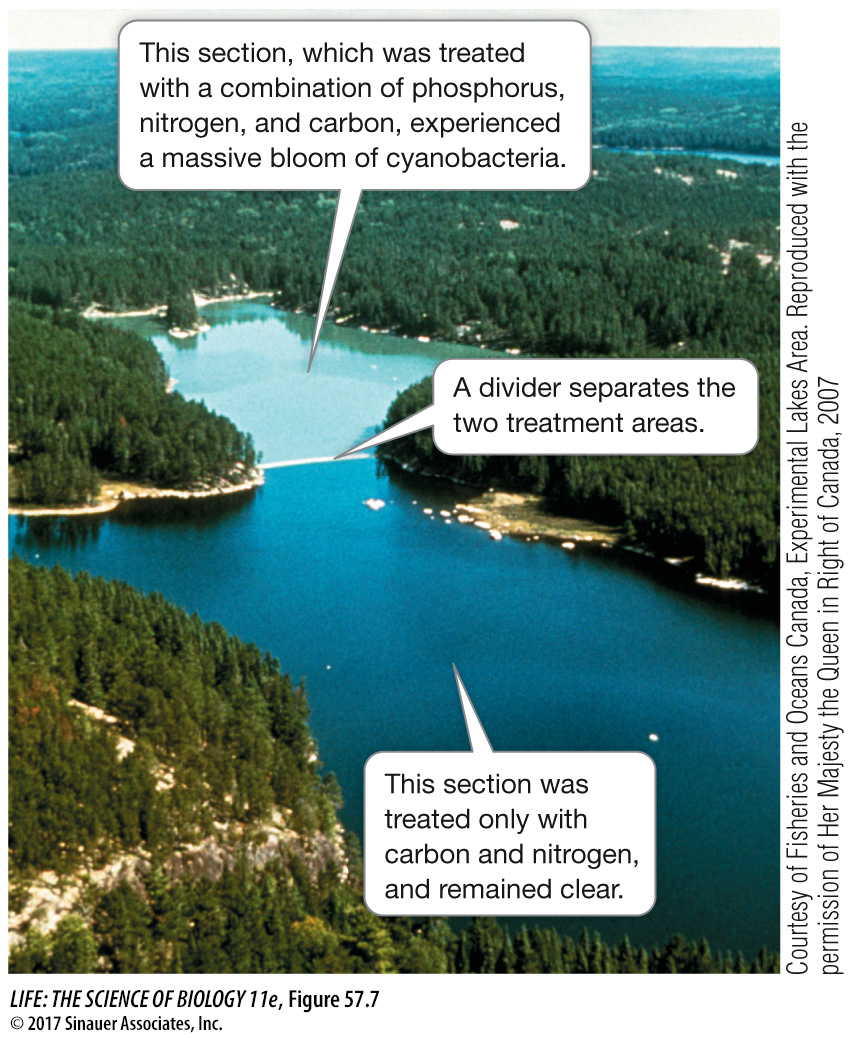Light and nutrients combine to control aquatic primary production
Chapter 53 described how Earth’s topography affects water depth, creating gradients in light, temperature, water pressure, and nutrient availability. The main primary producers in aquatic ecosystems—
In aquatic systems, NPP is limited primarily by iron, nitrogen, and phosphorus. The relative importance of these three nutrients varies depending on the aquatic ecosystem. In much of the open ocean, NPP is limited primarily by nitrogen. But in some locations, particularly the equatorial Pacific Ocean where excess nitrogen has been detected in surface waters, NPP by phytoplankton may be more limited by iron. In a series of experiments in the mid-
In lake ecosystems, NPP is limited primarily by phosphorus. The effect of phosphorus on lake NPP was first studied in connection with the declining water quality of lakes in North America and Europe. Wastewater and sewage were implicated in a dramatic increase in eutrophication, a process of ecosystem change initiated by an increase in nutrients consumed by phytoplankton, cyanobacteria, and algae in aquatic systems. Eutrophication can result in the explosive growth of algae (algal blooms). Decomposition of large volumes of dead algae by bacteria can in turn severely deplete oxygen needed by aquatic life (hypoxia). To understand which nutrients were most important to the blooms, David Schindler and colleagues conducted whole lake fertilization experiments, starting in 1969, in a set of small lakes in Ontario, Canada. They added nitrogen, carbon, and phosphorus to all or half of several lakes and found that phosphorus was the major trigger for phytoplankton and cyanobacteria blooms (Figure 57.7). These experiments set in motion a campaign to reduce phosphorus in wastewater by recommending the banning of phosphates in detergents and stripping them chemically in sewage treatment plants.
